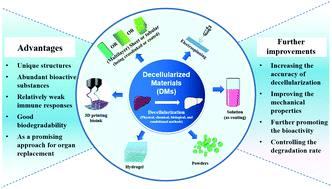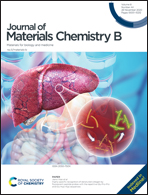Applications of decellularized materials in tissue engineering: advantages, drawbacks and current improvements, and future perspectives
Abstract
Decellularized materials (DMs) are attracting more and more attention because of their native structures, comparatively high bioactivity, low immunogenicity and good biodegradability, which are difficult to be imitated by synthetic materials. Recently, DMs have been demonstrated to possess great potential to overcome the disadvantages of autografts and have become a kind of promising material for tissue engineering. In this systematic review, we aimed to not only provide a quick access for understanding DMs, but also bring new ideas to utilize them more appropriately in tissue engineering. Firstly, the preparation of DMs was introduced. Then, the updated applications of DMs derived from different tissues and organs in tissue engineering were comprehensively summarized. In particular, their advantages, drawbacks and current improvements were emphasized. Moreover, we analyzed and proposed future perspectives.

- This article is part of the themed collection: Journal of Materials Chemistry B Recent Review Articles


 Please wait while we load your content...
Please wait while we load your content...